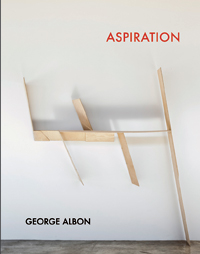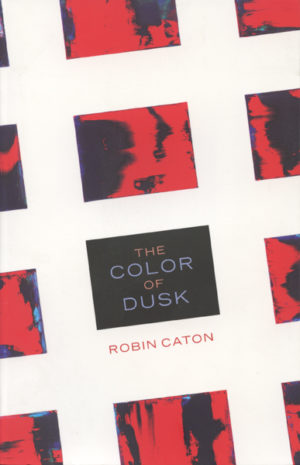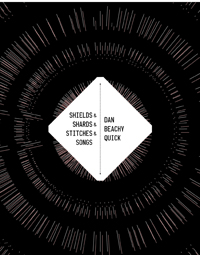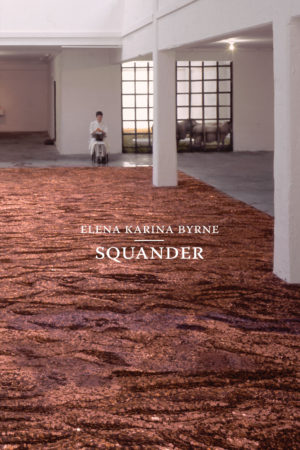Description
I think of aspiration as the state where a poet’s thrown together life-structures both invite and are breached by the poet’s preoccupations—known ones, new ones. It’s the dream of meaningful placement and the open set.
George Albon
About the Author
Reviews
Excerpt
George Albon is the author of Empire Life (Littoral Books), Thousands Count Out Loud (lyric & press), Brief Capital of Disturbances (Omnidawn), Step (Post- Apollo), and Momentary Songs (Krupskaya). His work has appeared in Hambone, New American Writing, O Anthology 4, Avec Sampler 1, and the anthologies The Gertrude Stein Awards in Innovative American Poetry, Bay Poetics, and Blood and Tears: Poems for Matthew Shepard. His essay “The Paradise of Meaning” was the George Oppen Memorial Lecture for 2002. He lives and works in San Francisco.
Aspiration is an essay that lives at the this precise point of evaporation. It soon moves from Cage to sound poetry, from Dada to Childhood games, and from Heidegger to Bruce Boone in a way that creates its nexus of meaning without telling readers what in means. In this way, the book really is much more like a poem than an essay in any traditional sense, although still, to call it a prose poem would be to deny the distinctly critical insight afforded by this reflexive project.
George Albon’s Aspiration … is a self-proclaimed meditation on the lyric that affords an encounter with the perceptible world, “where one object reflects the other,” and not unlike Cezanne’s meticulous need for calculated brushstrokes, its organization is careful and hard won. Albon, a poet’s poet and author of numerous titles, sets out to further elaborate a poetic discourse, both personal and technical, attentive to the past, present, and future possibilities of the lyric as form and eloquent subject; a subject spiritually, psychologically, and sensually charged as any poetic undertaking.
In Don DeLillo’s Ratner’s Star, a group of crack mathematical theoreticians have convened to make sense of a series of radio pulses from that eponymous, distant star, pulses that might be an attempt at communication from extraterrestrials. A hundred pages in, they take a break from their brain labor to watch a reputed genuine levitation. A flatcart is wheeled into a room. A body-sized cowl, and a presumed occupant beneath it, are atop the cart. Under the cowl sits a crosslegged holy man, unviewable through the material, but whose authenticity is vouchsafed to the assembled mathematicians by the holy man’s guardian. The latter’s introductory remarks, growing more smoke-and-mirrors with every sentence, drive most of the assembled out before he’s even concluded them. But the dozen who remain witness something. After a dramatic pause the form beneath the cowl begins to turn axially inside it. The cowl itself doesn’t turn but registers the motions of its interior occupant, who is steadily gaining velocity, like a top getting faster rather than slower with each revolution. At a critical cross-over between drag and lift the figure hovers up from its seat a few inches, spinning like nobody’s business. Then the cowl snaps in mid-air and settles back onto the cart, an empty wrap. The holy man has vanished. He has perhaps managed to dematerialize himself and reconstitute his essence as a frequency set that can communicate with the pulses. The mathies don’t know what to make of it. Then a handwritten note starts to circulate among them.
I saw it twice in a nightclub act in Perth.
Pass it on.
It’s familiar DeLillo location, with its gizmo of other-temptation taking up psychic room amid rationality’s minions. And yet they all crowded in to have a look.
DeLillo has an interesting shade in his books, inside of which sophisticated individuals, people whose self-worth involves not having anything put over on them—the caste who “know the levels”—also constitute a demographic of closet seekers, invested in ideas of the withheld and the occluded, “some deeply saving force,” meaningfully unknown and indivisible by sophistication, a something beyond that, were the conduction pitched in the right way, would give them permission to drop
their defenses and live with less quantifiable inclusions.
This scene with the cowl has come back to me lately, as I’ve fidgeted over the shape and matter of a stretch of writing that would touch issues inside and around the modern lyric. Most of the fidgeting has been pure reluctance. Reluctance to give myself over to a thing, a chimerical energy, that relates more familiarly to disparation and radical combination and atopic crossings and weightless magnification and submerged affiliations, only to entangle myself trying to isolate some of that energy with the kind of verbal mass that falls into sentences. To presume parity with something hidden and spinning. And to imagine that I can get away with letting that thing in motion spiral out to four curving paths or infills, with near-arbitrary designations—aspiration, practice, immanence, and migration—without betraying the cowl, the skin without inscription, that gives three-dimensionality to belief and commitment.




